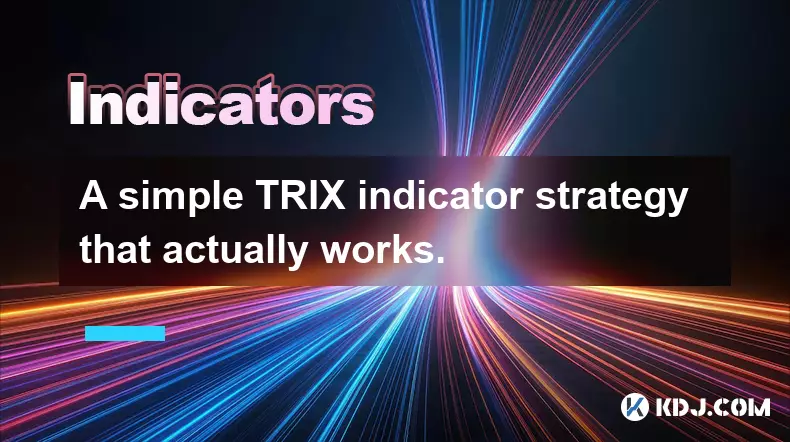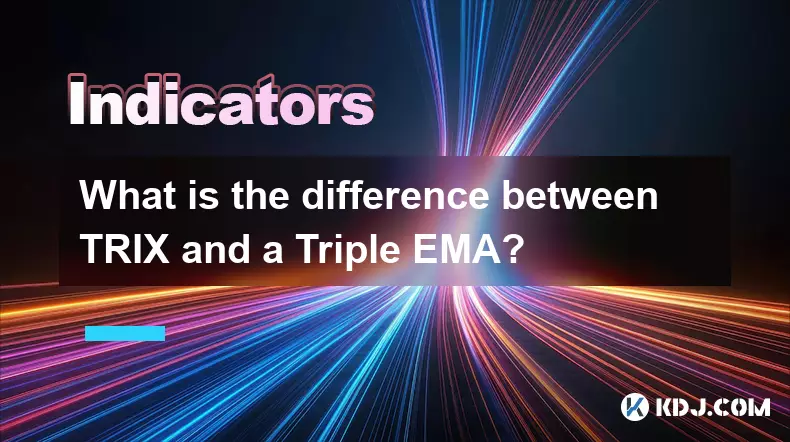-
 bitcoin
bitcoin $105968.894684 USD
4.17% -
 ethereum
ethereum $3639.320047 USD
7.62% -
 tether
tether $1.000339 USD
0.06% -
 xrp
xrp $2.407774 USD
5.96% -
 bnb
bnb $1011.704193 USD
2.28% -
 solana
solana $166.942754 USD
6.37% -
 usd-coin
usd-coin $1.000143 USD
0.03% -
 tron
tron $0.291515 USD
0.25% -
 dogecoin
dogecoin $0.181682 USD
4.06% -
 cardano
cardano $0.585450 USD
4.54% -
 hyperliquid
hyperliquid $42.099968 USD
5.20% -
 chainlink
chainlink $16.160745 USD
5.45% -
 zcash
zcash $645.269648 USD
12.96% -
 bitcoin-cash
bitcoin-cash $507.430338 USD
2.80% -
 stellar
stellar $0.290357 USD
3.69%
How to effectively combine KDJ with price action patterns?
Combining KDJ crossovers with price action patterns like engulfing candles or pin bars enhances signal accuracy in volatile crypto markets.
Nov 04, 2025 at 10:04 pm

Understanding the Synergy Between KDJ and Price Action
1. The KDJ indicator, an advanced version of the stochastic oscillator, measures momentum by comparing a token’s closing price to its price range over a specific period. It consists of three lines: %K (fast), %D (slow), and %J (divergence). These lines help traders identify overbought or oversold conditions in volatile crypto markets. When combined with price action patterns such as engulfing candles, double tops, or inside bars, the KDJ adds a layer of confirmation that increases signal reliability.
2. Price action alone can sometimes produce false breakouts or misleading signals, especially during low-volume periods common in cryptocurrency trading. By overlaying KDJ readings, traders gain insight into whether momentum supports the observed pattern. For instance, a bullish engulfing candle at a key support level carries more weight if the %K line crosses above the %D line from below 20, indicating both structural strength and renewed buying pressure.
3. One effective method is to wait for confluence between a recognized price formation and a KDJ crossover. A pin bar rejection at resistance coinciding with the %J line peaking above 80 and reversing downward suggests exhaustion among bulls. This dual confirmation reduces the risk of entering against the trend or during consolidation phases often seen in altcoin charts.
4. Traders should also monitor divergences between price and the KDJ. If a cryptocurrency makes a higher high but the KDJ forms a lower high, this bearish divergence may precede a reversal even before any classic price pattern emerges. Conversely, a rising KDJ during lower lows in price can hint at accumulation before a breakout, especially when followed by a bullish engulfing or outside bar.
Practical Setups Using KDJ and Candlestick Formations
1. A common setup involves identifying a double bottom pattern on the 4-hour chart of a major pair like BTC/USDT. Once the second trough forms near the same level as the first, traders watch for the %K line to rise above the %D line while both remain under 30. The completion of the pattern—confirmed by a close above the interim high—is stronger when backed by this KDJ signal, increasing confidence in a long entry.
2. Inside bars, which reflect market indecision, become actionable when paired with extreme KDJ values. If an inside bar develops after a sharp downtrend and the KDJ reads below 20, a breakout to the upside accompanied by %K crossing %D upward offers a high-probability long opportunity. This works particularly well in trending markets where pullbacks are shallow and momentum shifts quickly.
3. Shooting star candles at resistance levels gain significance when the %J line exceeds 100 and begins to turn down. In fast-moving crypto markets, such over-extended readings suggest temporary euphoria that often corrects rapidly. Entering a short position after confirmation—such as a bearish close following the shooting star—with tight stop-loss placement becomes statistically favorable under these conditions.
4. Another reliable configuration occurs during flag or pennant consolidations. As price compresses within converging boundaries, the KDJ typically flattens in neutral territory. A breakout candle exceeding average volume with the %K line surging from below 50 to above it confirms participation from aggressive buyers, filtering out fakeouts common in low-cap tokens.
Filtering False Signals in High-Volatility Environments
1. Cryptocurrency charts are prone to whipsaws due to thin order books and sudden macroeconomic triggers. To reduce noise, traders can apply a moving average filter—such as requiring price to be above the 50-period EMA on the 1-hour chart before considering bullish KDJ-price action setups. This ensures alignment with the broader trend, improving win rates.
2. Timeframe alignment strengthens validity. A daily KDJ showing oversold conditions enhances the credibility of a 4-hour bullish hammer pattern. Similarly, a weekly overbought KDJ reading adds gravity to a 12-hour gravestone doji at a psychological resistance level. Multi-timeframe analysis prevents overreliance on isolated signals.
3. Volume spikes accompanying price action patterns must coincide with KDJ crossovers for optimal results. On platforms like Binance or Bybit, sudden surges in futures funding rates coupled with a breakout candle and rising %K from oversold zones indicate institutional participation rather than retail-driven pumps.
Ignoring volume context while relying solely on KDJ and candlesticks can lead to poor execution, especially during news-driven volatility or exchange outages.Frequently Asked Questions
What settings work best for KDJ in crypto trading? A 9,3,3 configuration is standard, though scalpers may use 5,3,3 on lower timeframes. Adjusting based on asset volatility—such as using 14,3,3 for stablecoins versus 6,3,3 for memecoins—can improve sensitivity without generating excessive noise.
Can KDJ be used on non-candlestick charts like Heikin-Ashi? Yes, but caution is required. Heikin-Ashi smooths price data, potentially delaying reversal signals. When combining with KDJ, ensure the %K and %D crossovers align with actual closing prices on traditional candlesticks to avoid lag-induced errors.
How do you handle KDJ in ranging vs trending markets? In sideways markets, focus on overbought (>80) and oversold (
Is KDJ suitable for automated trading strategies? Absolutely. Algorithmic systems can code rules around KDJ crossovers coinciding with predefined candlestick patterns. However, including filters like minimum volume thresholds, RSI confirmation, or volatility bands improves robustness and minimizes losses during choppy conditions.
Disclaimer:info@kdj.com
The information provided is not trading advice. kdj.com does not assume any responsibility for any investments made based on the information provided in this article. Cryptocurrencies are highly volatile and it is highly recommended that you invest with caution after thorough research!
If you believe that the content used on this website infringes your copyright, please contact us immediately (info@kdj.com) and we will delete it promptly.
- Ripple (XRP) in 2026: Hold or Fold? A Look at XRP's Future and Emerging DeFi Alternatives
- 2025-11-08 18:35:01
- Zcash ZEC Coin Price Explosion: From Privacy Niche to Center Stage
- 2025-11-08 18:55:01
- Berachain Price Prediction: Navigating the Honeycomb Hype in Crypto
- 2025-11-08 18:55:01
- Arthur Hayes, Gold, and Bitcoin: A Modern Monetary Trinity?
- 2025-11-08 19:15:01
- Shiba Inu's Next Move: Navigating a Shifting Market
- 2025-11-08 19:20:01
- Pakistan's Crypto Crossroads: Balancing Opportunity with Asset-Backed Realities
- 2025-11-08 19:20:01
Related knowledge

How do professional traders use the TRIX indicator?
Nov 06,2025 at 04:40pm
Understanding the TRIX Indicator in Crypto TradingThe TRIX (Triple Exponential Average) indicator is a momentum oscillator used by professional trader...

Can I use the TRIX indicator on my mobile trading app?
Nov 07,2025 at 07:40pm
The TRIX indicator, a momentum oscillator designed to filter out short-term fluctuations and highlight long-term trends, has become increasingly popul...

How to code a simple TRIX indicator script in Pine Script?
Nov 07,2025 at 06:20am
How to Code a Simple TRIX Indicator in Pine Script The TRIX (Triple Exponential Moving Average) indicator is widely used in cryptocurrency trading to ...

A simple TRIX indicator strategy that actually works.
Nov 08,2025 at 05:39pm
Understanding the TRIX Indicator in Crypto Trading1. The TRIX (Triple Exponential Average) indicator is a momentum oscillator designed to filter out s...

What is the difference between TRIX and a Triple EMA?
Nov 10,2025 at 04:00am
Understanding Decentralized Exchanges in the Crypto Ecosystem1. Decentralized exchanges (DEXs) have emerged as a cornerstone of blockchain innovation,...

How to trade TRIX indicator signals on the 1-hour chart?
Nov 07,2025 at 05:39am
Bitcoin's Role in Decentralized Finance1. Bitcoin remains the cornerstone of decentralized finance, serving as a benchmark for value and security acro...

How do professional traders use the TRIX indicator?
Nov 06,2025 at 04:40pm
Understanding the TRIX Indicator in Crypto TradingThe TRIX (Triple Exponential Average) indicator is a momentum oscillator used by professional trader...

Can I use the TRIX indicator on my mobile trading app?
Nov 07,2025 at 07:40pm
The TRIX indicator, a momentum oscillator designed to filter out short-term fluctuations and highlight long-term trends, has become increasingly popul...

How to code a simple TRIX indicator script in Pine Script?
Nov 07,2025 at 06:20am
How to Code a Simple TRIX Indicator in Pine Script The TRIX (Triple Exponential Moving Average) indicator is widely used in cryptocurrency trading to ...

A simple TRIX indicator strategy that actually works.
Nov 08,2025 at 05:39pm
Understanding the TRIX Indicator in Crypto Trading1. The TRIX (Triple Exponential Average) indicator is a momentum oscillator designed to filter out s...

What is the difference between TRIX and a Triple EMA?
Nov 10,2025 at 04:00am
Understanding Decentralized Exchanges in the Crypto Ecosystem1. Decentralized exchanges (DEXs) have emerged as a cornerstone of blockchain innovation,...

How to trade TRIX indicator signals on the 1-hour chart?
Nov 07,2025 at 05:39am
Bitcoin's Role in Decentralized Finance1. Bitcoin remains the cornerstone of decentralized finance, serving as a benchmark for value and security acro...
See all articles





















![The Graph Price Prediction [GRT Crypto Price News Today] The Graph Price Prediction [GRT Crypto Price News Today]](/uploads/2025/11/07/cryptocurrencies-news/videos/690d4df44fe69_image_500_375.webp)




















































